We copy the styles of previous centuries; so we make a lot of Boulle style furniture.
The richness and the quality of the materials are the same but the execution benefits from technical progress: the quality of the furniture of the end of the XIX is superior to that of their ancestors.
Here is a rare work table in gilded brass marquetry on a blackened and lacquered pear tree background.
Its lively scalloped top, surrounded by an ingot mold, is adorned with a cartouche opening onto a rosewood interior with a vanity mirror and a belt drawer. In the lower part, a hopper drawer remains invisible below.
Its feet are curved with ornamentation in chiseled and gilded bronze.
Period: Second half of the 19th century.
Dimensions: H: 72 x W: 63 x D: 43cm.
Stamped: L.Gradé & Pelcot,
A work table, also called a worker, it is a small light table whose top is surrounded by a high border to prevent falling objects.
The work table or worker is a small table that can be recognized by its removable flat or rounded top containing storage.
This table with or without crotch shelf sometimes has a sliding book box under the belt. Louis Gradé set up his workshops in 1852 at 9, rue Caste and in 1856, he opened a store at 23, rue de la Paix in Paris.
He participated in the London Universal Exhibition of 1851 with an honorable mention.
From 1866, the house took the name of Louis GRADÉ ET PELCOT.
They will both participate in the Universal Exhibition of 1867. At the end of the 19th century (1886) the prestigious Boulle school was created, which is now the Higher School of Arts Applied to the Furniture Industries and Interior Architecture.



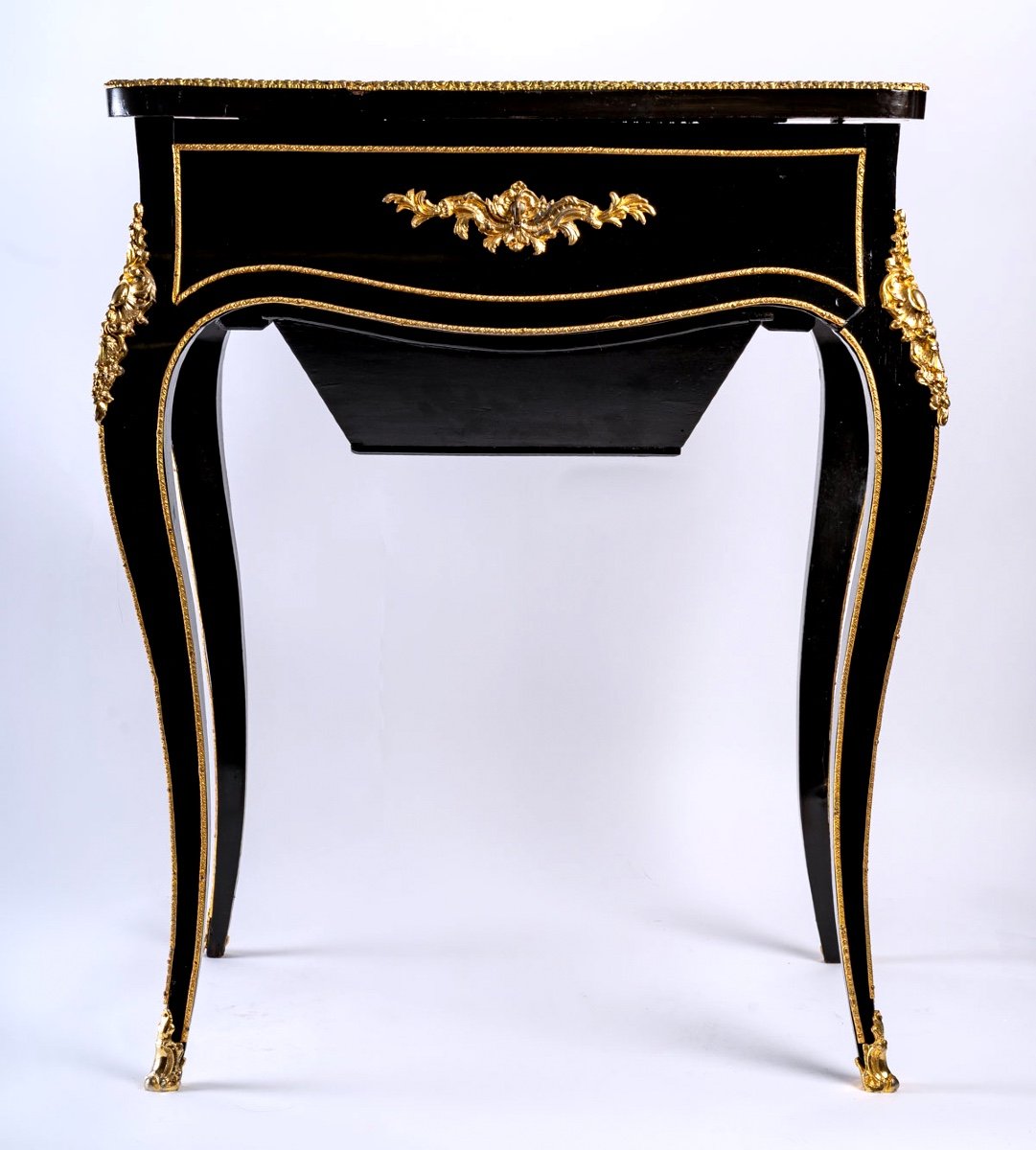
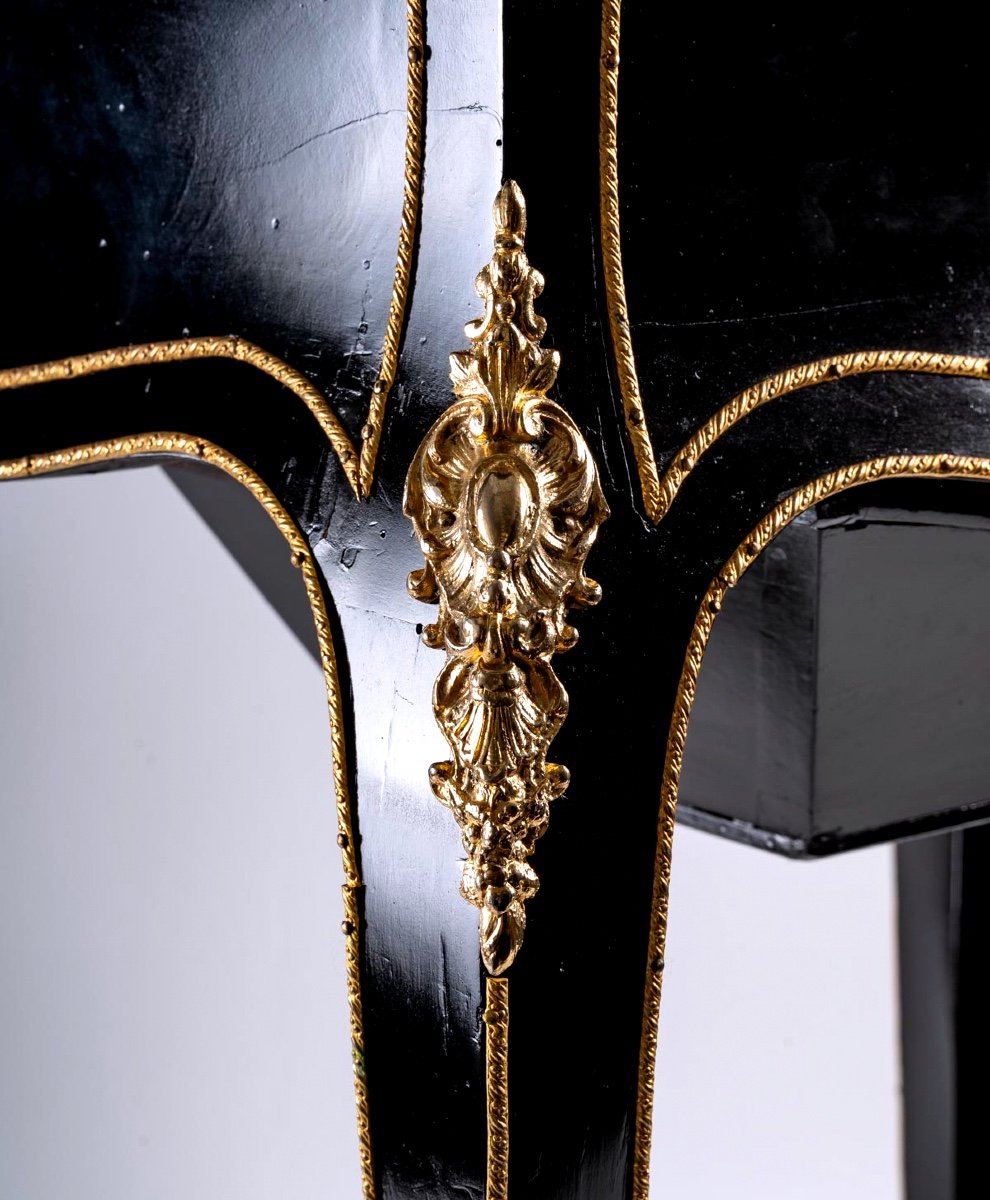
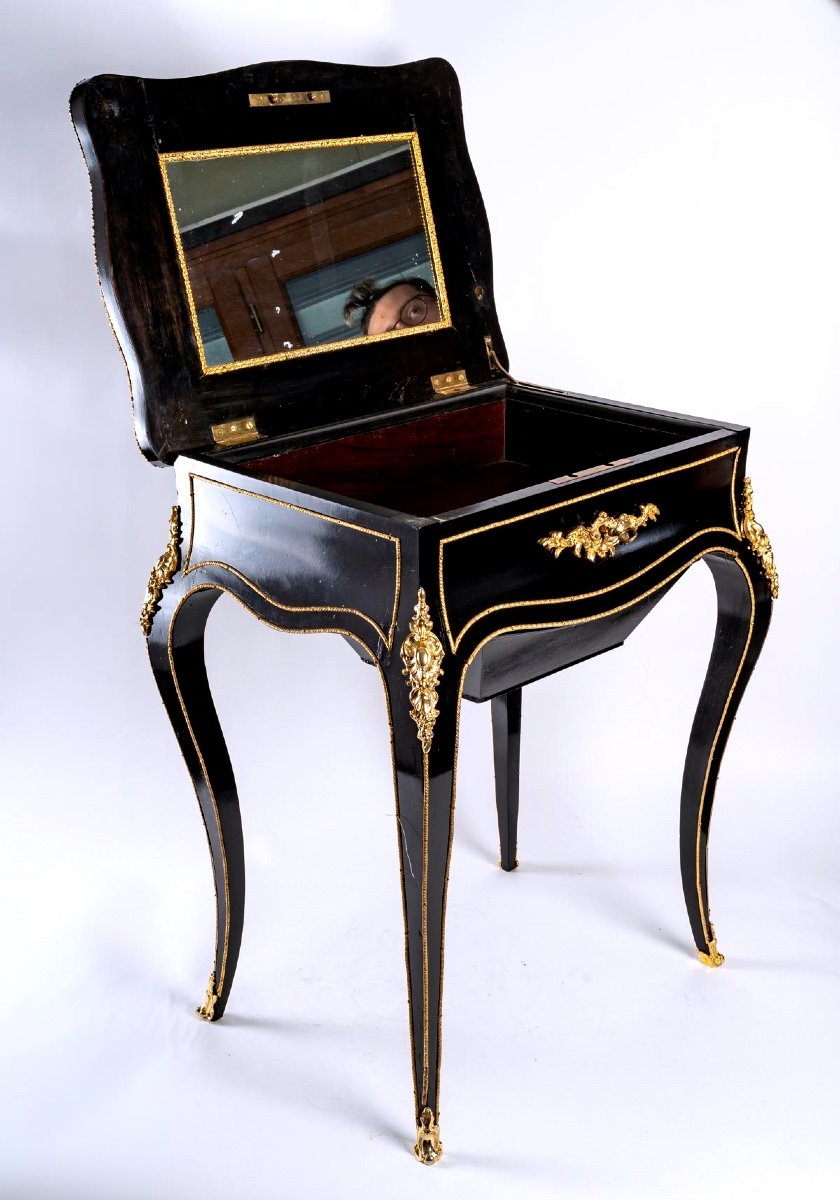
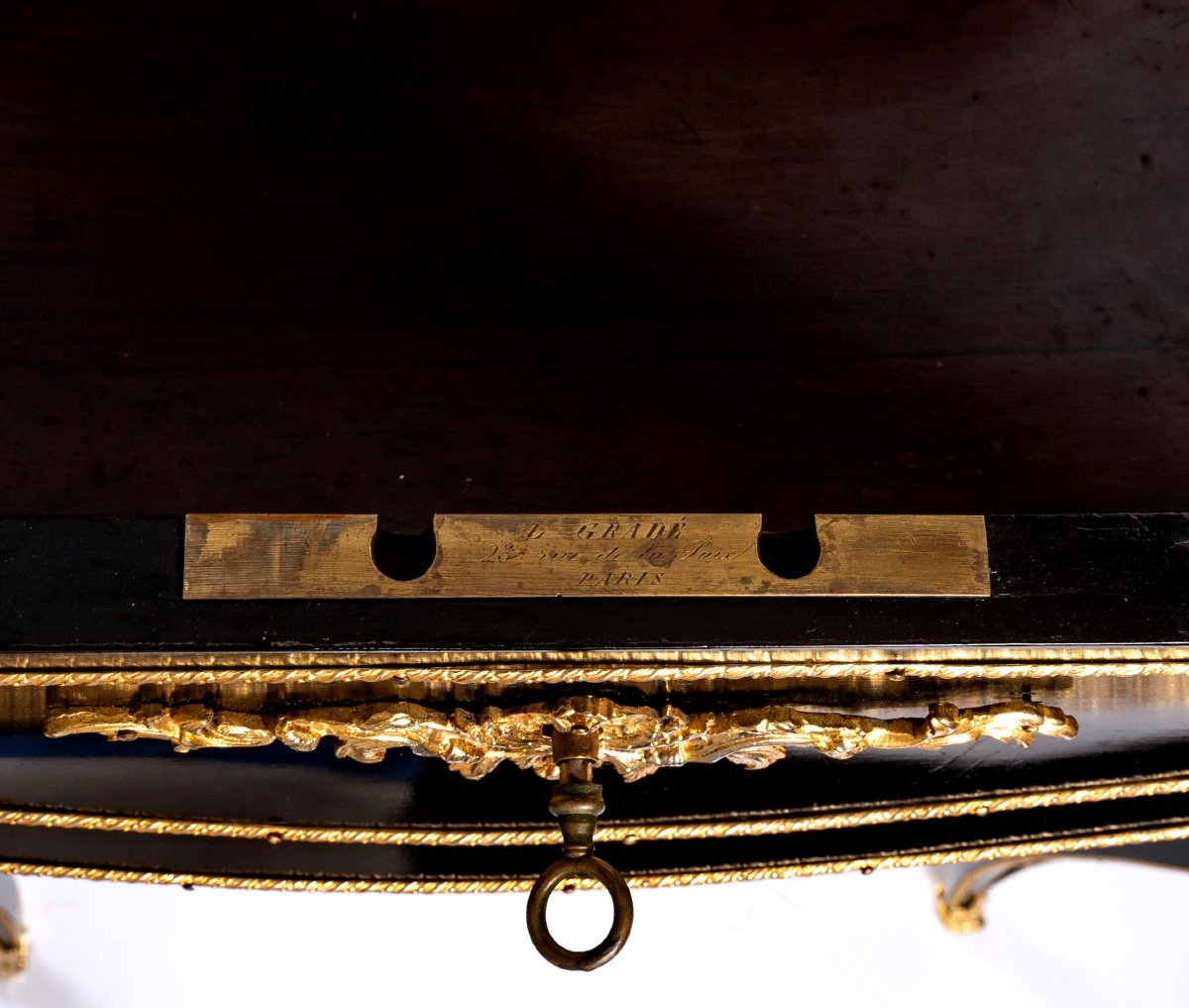
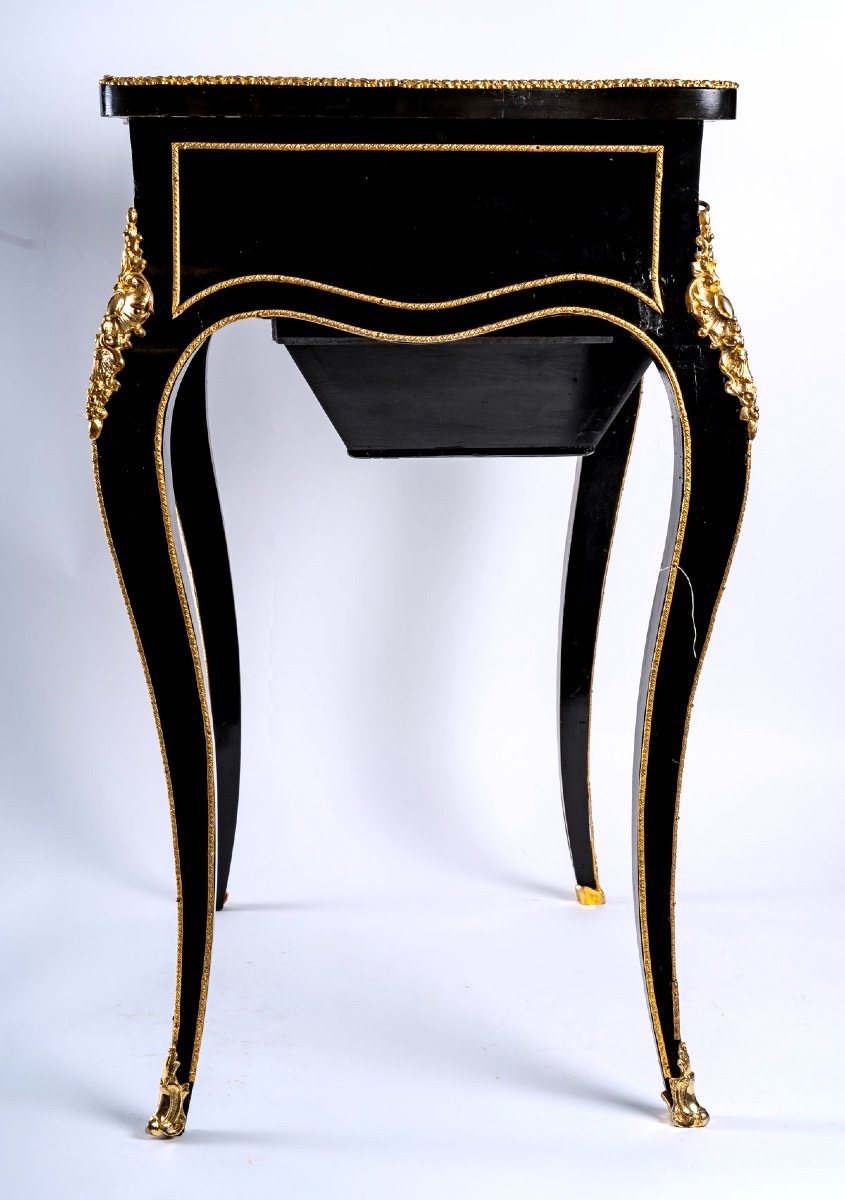
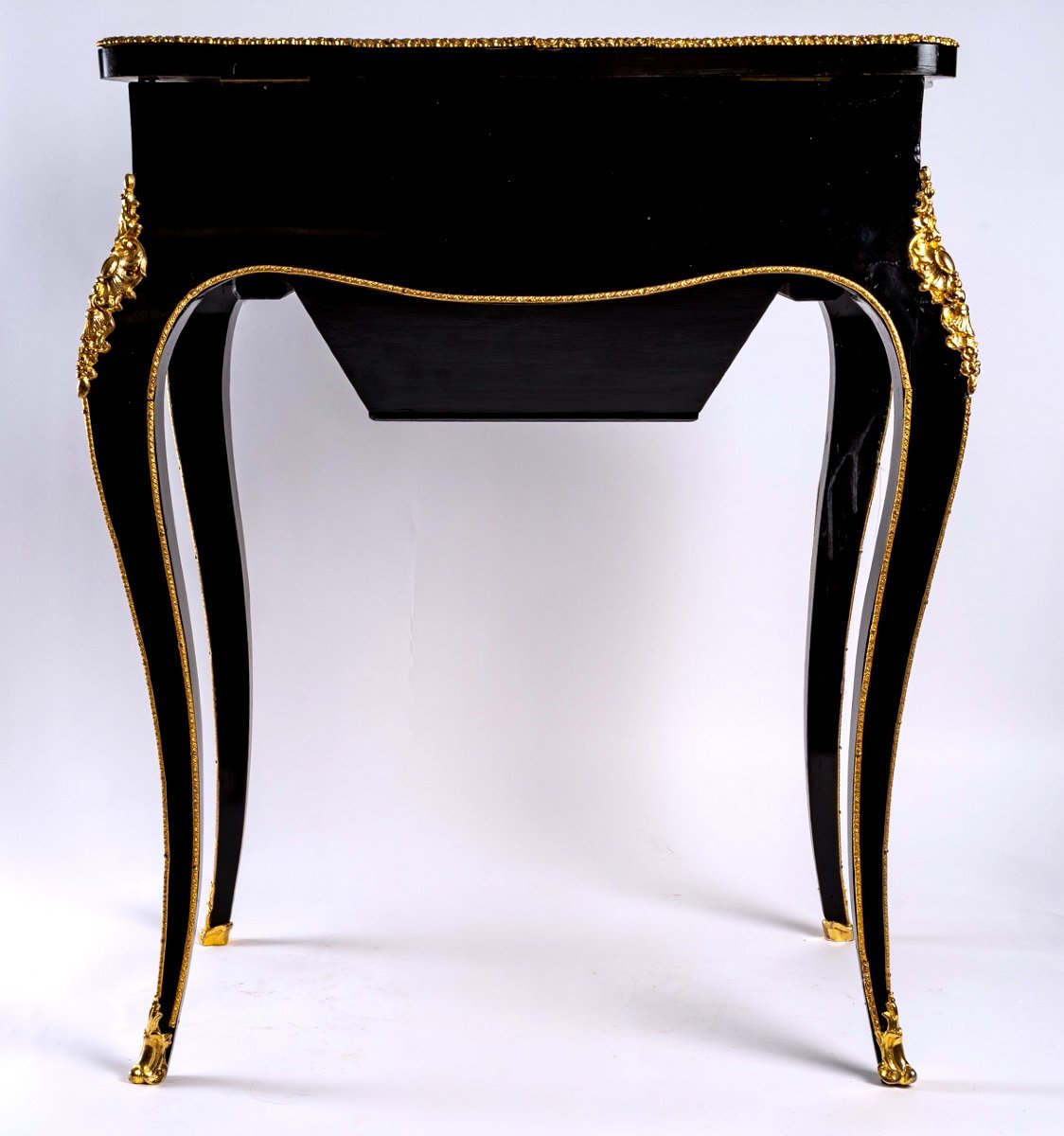
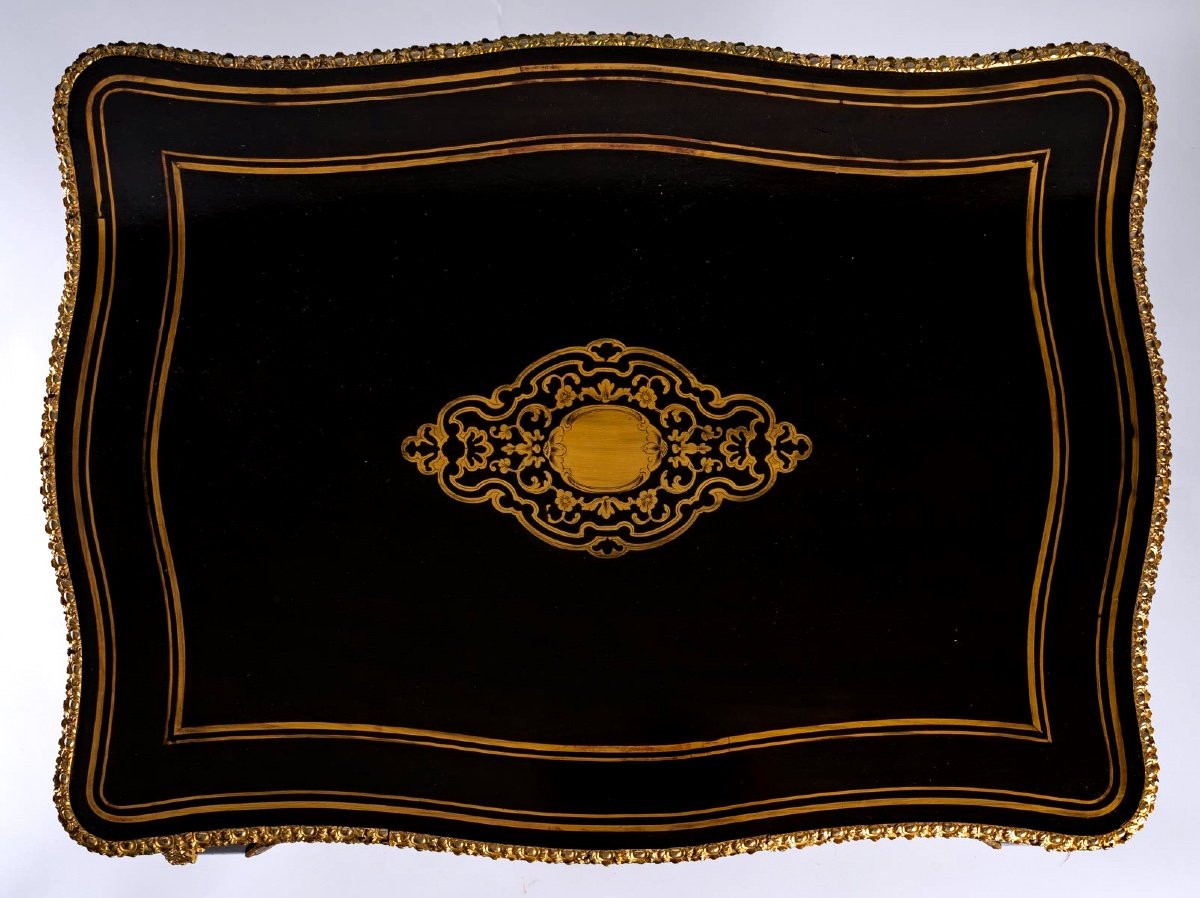
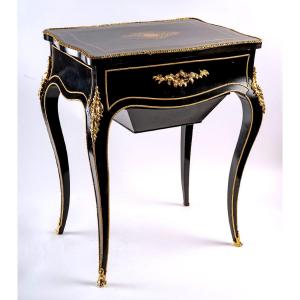








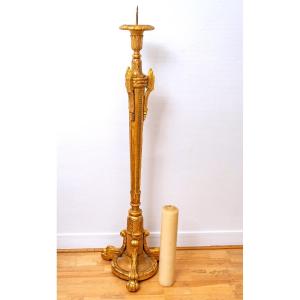
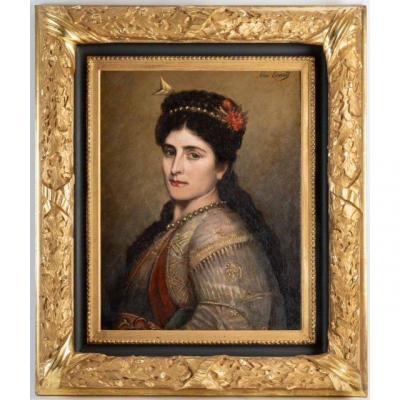
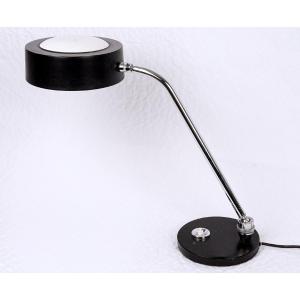

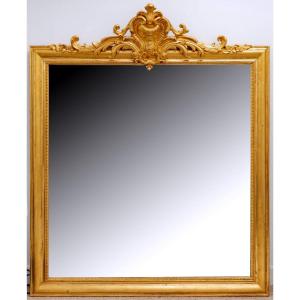
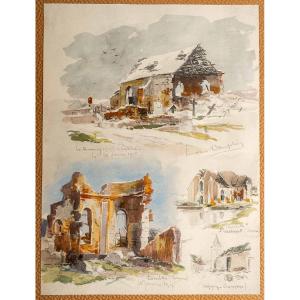
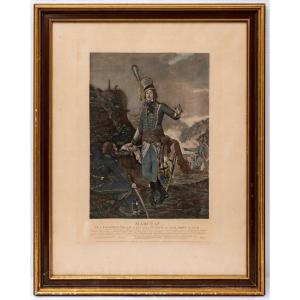
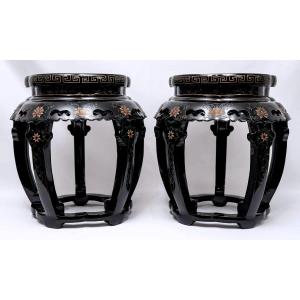
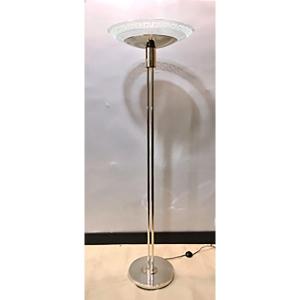

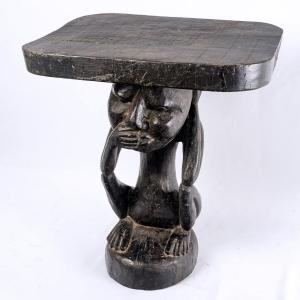







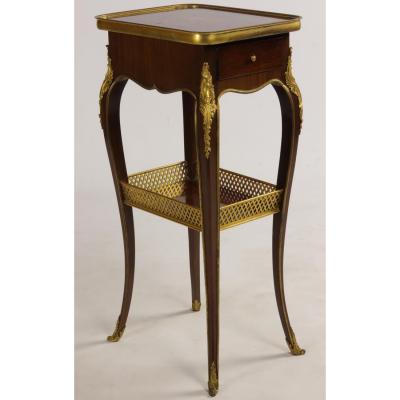



 Le Magazine de PROANTIC
Le Magazine de PROANTIC TRÉSORS Magazine
TRÉSORS Magazine Rivista Artiquariato
Rivista Artiquariato